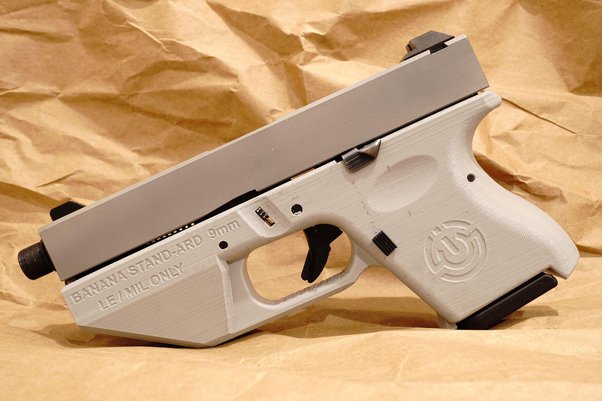No, while 3D printing can create some functional gun parts, manufacturing a fully functional and safe firearm solely with a 3D printer is difficult and not recommended.
Here’s why:
What are 3D Printed Guns?
3D Printed guns are firearms partially or entirely created using a 3D printer. The concept gained notoriety in 2013 when the Liberator, the first printable gun design, emerged online. These guns sparked controversy due to concerns about easy access to untraceable weapons.
Legality of 3D Printed Guns
The legality of 3D-printed guns is a complex issue. Federal laws in the United States regulate firearms and require background checks for purchases from licensed dealers. However, the legality of blueprints and instructions for 3D-printed guns is a point of contention.
Some states have enacted laws restricting the creation of 3D-printed guns, while others haven’t. This patchwork of regulations creates a challenging situation for law enforcement.
The Cost and Accessibility of 3D Printed Guns
While the idea of printing a gun at home might sound easy, the reality is more complex. The cost of a 3D printer capable of creating functional gun parts can be significant. Additionally, the printing process itself can be time-consuming and requires technical knowledge.
Finding blueprints for 3D-printed guns online can be relatively easy. However, these designs often require additional metal parts that cannot be printed and must be purchased separately. Furthermore, the quality and reliability of these online plans can vary greatly.
Individuals and groups advocating for gun rights have been at the forefront of developing and sharing 3D-printed gun designs. However, some argue this accessibility could be exploited by criminals seeking untraceable weapons.
Ethical and Safety Concerns
The ease of access to 3D-printed gun blueprints raises several ethical and safety concerns. These guns, often made of plastic, may be undetectable by metal detectors and more difficult for law enforcement to track.
There’s also a worry that these guns could fall into the wrong hands, like those of criminals or extremists. Furthermore, 3D-printed guns may not be as durable or safe as commercially manufactured firearms, potentially leading to accidents or malfunctions.
The emergence of 3D-printed guns poses a challenge to efforts aimed at preventing gun violence. Finding effective ways to regulate access to blueprints and ensure the safety of these weapons remains an ongoing debate.
Conclusion
While 3D-printed guns represent a developing technology, they are not a simple solution for obtaining a working firearm. The technical hurdles, legal restrictions, and safety concerns make it a complex issue. The conversation surrounding 3D-printed guns is likely to continue as technology evolves and regulations adapt.

